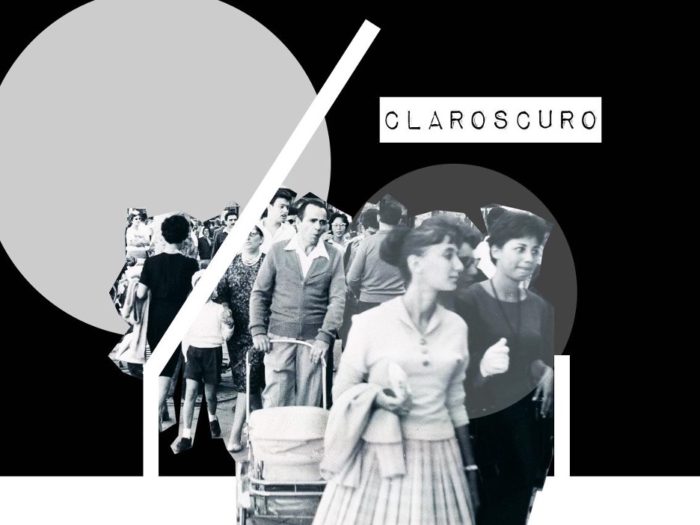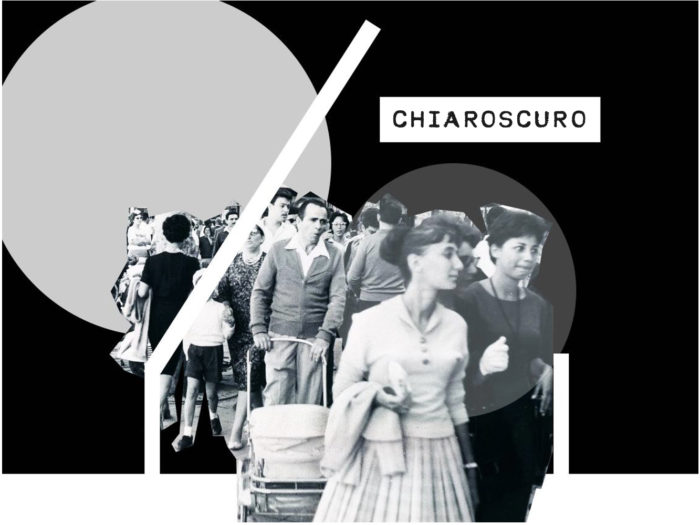Éxodo
O el extraño desafío de la representación del pueblo en tres actos
Luz.
I.
Mientras pasa el tiempo, de a poco, empieza a poblarse la escena. Desde todas las direcciones llegan al escenario anchas columnas de gente que ha recorrido largas distancias para estar aquí. Muchas de estas columnas no han podido siquiera avanzar. Ahora que están, es como si estuviesen ahí desde siempre.
II.
Por fin, en escena está el pueblo. (Se debería considerar como un asunto central para la puesta en escena si se trata del pueblo representando al pueblo o el pueblo haciéndose presente, poniendo fin a todo intento histórico de su representación). Millones de personas portando banderas, capuchas, pañoletas y pancartas. Se empieza a sentir el olor a quemado de algunas barricadas al fondo del escenario, la sala se llena de humo, láseres y fuegos artificiales. El espacio de las butacas está absolutamente vacío, todos están en escena, se suman boletera y acomodador. Nadie falta. Millones de proyecciones por toda la sala nos muestran que no hay nadie en sus casas ni puestos de trabajo, no hay nadie en las calles. El ruido es ensordecedor y la temperatura insoportable producto del fuego y los cuerpos. Las paredes del teatro empiezan a sudar, el suelo tiembla y la estructura del escenario cruje. En un primer plano el pueblo despliega un lienzo donde se puede leer con grandes y gruesas letras negras sobre fondo blanco ¨El pueblo ya no es lo que siempre falta”.
III.
El pueblo ha salido de escena, la gente ha empezado sus eternas peregrinaciones a las zonas oscuras del teatro, desapareciendo conforme pasa el tiempo. El espacio, ahora vacío, ha quedado en penumbras y obrando una ausencia aterradora. Millones de proyecciones continúan mostrando las calles vacías, nadie en el quiosco al frente del teatro, nadie dando el tiempo en televisión, nadie fumando a un costado del camino. Escalofriante, pero no hay nadie para verlo. ¿A dónde se ha ido el pueblo?
Oscuro.
Exodus
Or, the strange challenge of staging the people in three acts
Light.
I.
As time passes, little by little, the stage begins to fill. Broad columns of people who have traveled long distances to get here arrive from all directions. Many of these columns haven’t been able to move forward. Now that they are here, it’s as if they’ve always been here.
II.
At last, the people are on the stage. (A central point of this staging should be the consideration of whether it’s about the people performing “the people” or the people making themselves present, putting an end to all historical representation). Millions of people waving flags, wearing hoodies and kerchiefs, and carrying posters. The theatre begins to fill with the smell of barricades burning at the back of the stage. with smoke, lasers, and fireworks. The seats are completely empty; everyone is on the stage, including the box office personnel and the usher. No one is missing. Millions of projections throughout the theatre show us that no one is home or at work, no one is in the street. The noise is deafening and the temperature produced by the fire and the bodies unbearable. The theatre’s walls begin to sweat, the floor shakes, and the stage creaks. At the front the people unfurl a banner that reads, in large black letters on a white background, “The people are no longer what is always missing.”
III.
The people have left the stage. They have begun their eternal peregrinations into the dark parts of the offstage, disappearing as time passes. The space, now empty, remains in penumbra, creating a terrifying absence. Millions of projections continue, showing the empty streets — no one in the kiosk in front of the theatre, no one telling us the time on television, no one smoking on the side of the road. Frightening, but there’s no one to see it. Where have the people gone?
Darkness.

